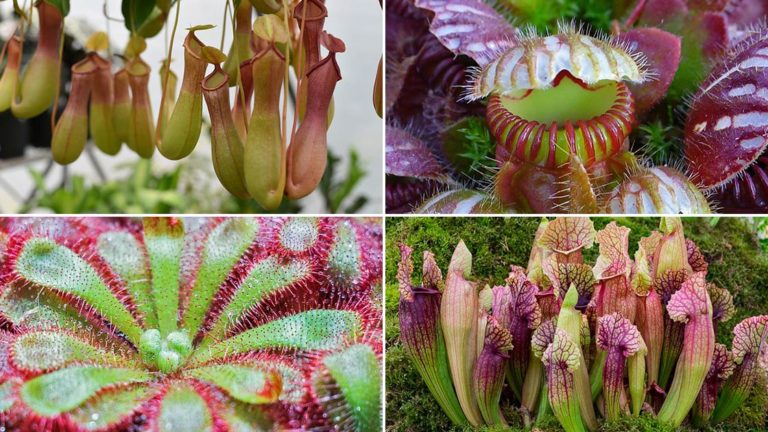Carnivorous plants, for their uniqueness and beauty, are an attractive addition to your collection of houseplants. These 7 Indoor Carnivorous Plants will certainly make your living space attractive and also act as a bug repellant too.
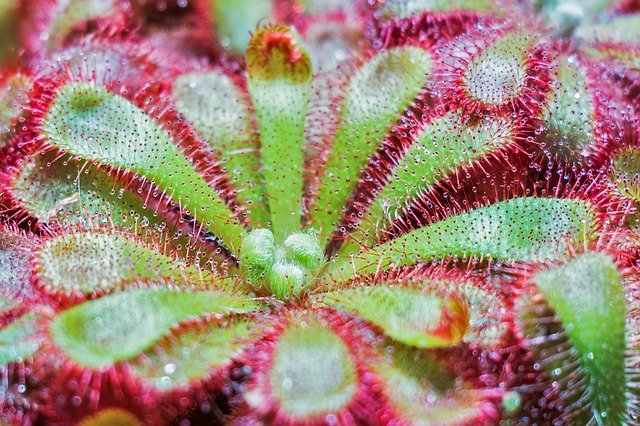
What Are Carnivorous Plants?
True carnivorous plants feed only on insects, although the speed with which they can grab an insect is amazing. Instead of sustaining themselves on a “friendly” diet of water and sun like normal houseplants, carnivorous house plants get most of their nutrition from proteins, such as insects, and even from some small frogs and mammals.
Their sweet-smelling nectar and bright colors attract their prey and trap them inside in their peculiar leaves. Once the prey is trapped, they break them down with their digestive enzymes and absorb vital nutrients.
Carnivorous plants love swampy environments filled with moss and moisture and may not grow in commercial potting soil or soil containing fertilizers. There are some varieties, however, that can be suited for growth in pots.
Here’s a guide on how to grow carnivorous plants in pots here.
Best Indoor Carnivorous Plants
1. Venus Flytrap (Dionaea muscipula)
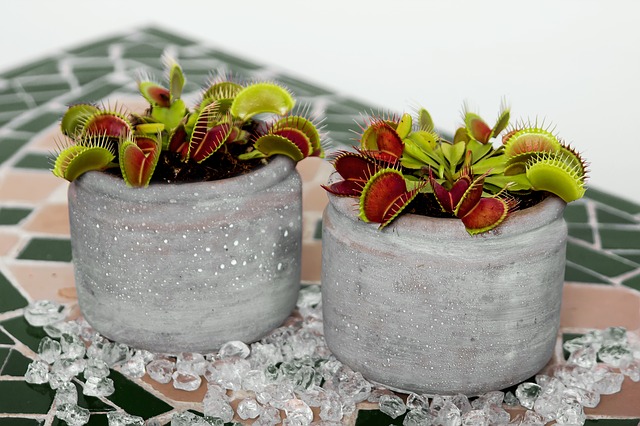
Venus flytrap (also known as Dionaea) is one of the most popular indoor carnivorous plants. It is one of the very few carnivorous plants that actively catch their prey, with its two articulated blades snapping in to catch the prey.
Its unique insect catching toothed leaves looks so undoubtedly attractive and mysterious that they’d indeed enliven the space in your home. It primarily eats ants and flies, but you can feed it other insects as well.
Growing Tips:
- For a young plant, it is recommended to feed it a couple of smaller insects in a month.
- The soil is best kept damp all year round using stored rainwater, or reverse osmosis or deionized water.
- The plant is preferably placed near a window that receives filtered sunlight.
Click here to get yourself a Venus Flytrap plant and have fun caring for it.
2. Pitcher Plant (Sarracenia)
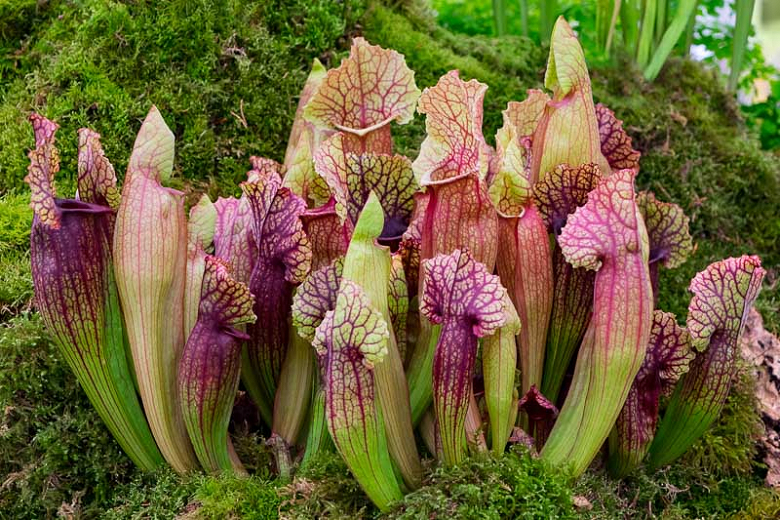
Pitcher plants are found in a wide range of habitats with poor soil conditions, from pine barrens to sandy coastal swamps. It comes in an array of shades of purple, yellow, and pink, which makes it another beautifully attractive carnivorous houseplant. The plant’s leaves have an intriguing upward tabular trap with a cavity filled with digestive liquid (nectar) that lures the prey.
Growing Tips:
- Place it in bright indirect light for optimum growth.
- To replicate its natural habitat, a potting mix of two parts of peat moss and one part of sand or perlite is ideal for a pitcher plant to thrive.
If you’re looking to purchase a purple Pitcher plant, click here.
3. Bladderwort (Utricularia)
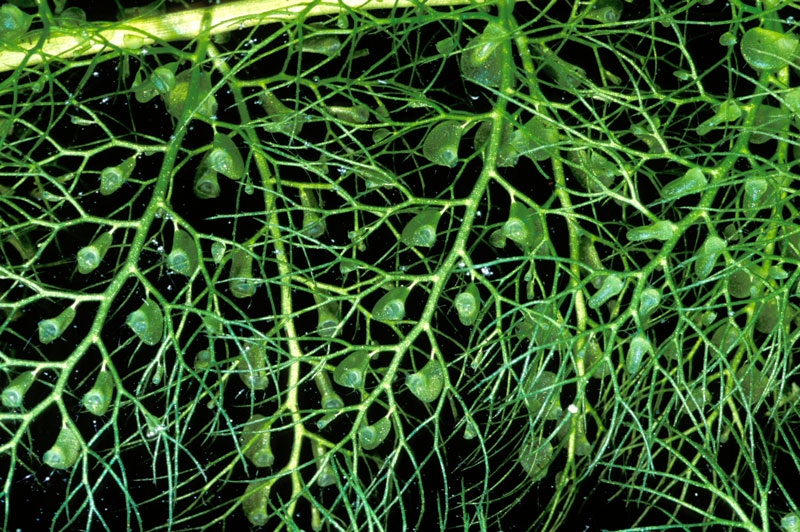
This rootless, aquatic carnivorous plant, has tiny hairs that get activated by insects. When insects come in contact with these hairs, the trigger opens a ‘trap door’ attracting the prey with a thin sweet substance. Once trapped, the insect is quickly eaten by the plant.
Growing Tips:
- They live best in a shallow tank or fish tank.
- Since aquatic Bladderworts don’t have roots, you need to change the water frequently as they depend on the oxygen dissolved in the water.
Here’s where to get an aquatic Bladderwort plant.
4. Butterwort (Pinguicula)
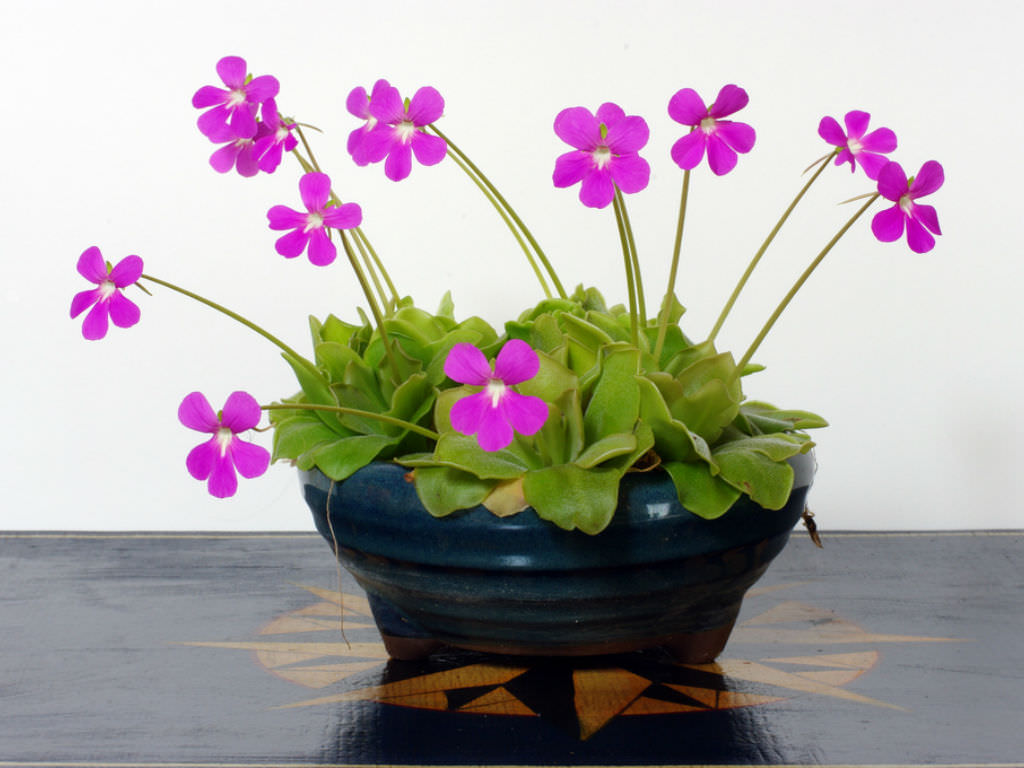
Butterwort are commonly available online and at garden centers. They are distinguished by their tiny appearance with bright colorful flowers. To attract insects such as flies, it uses the sticky resin on its leaves to trap and digest its prey.
Growing Tips:
- It likes evenly moist soil and thrives in temperatures of 75-100 F (24-38 C) in summer and 45-75 F (7-24 C) in winter.
- Fertilizers of any kind are not recommended, as they can kill the plant.
Get a Butterwort plant online here.
5. Cape Sundew (Drosera Capensis )
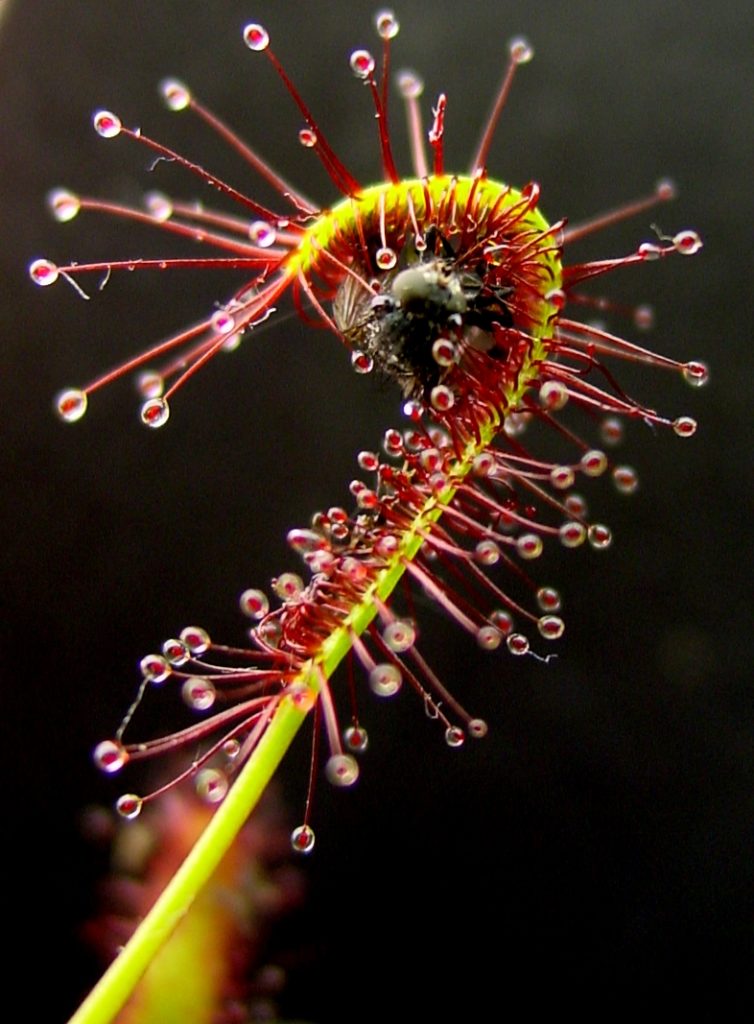
The Sundew plant, as the name suggests, has hairy stems adorned with droplets of slime resembling morning dew. These drops are digestive enzymes that attract and dissolve their prey.
Growing Tips:
- Sundews require warm temperatures, which should be above 50 F (10 C).
- Moist soil and moist environment are also two important growing conditions.
Looking for a Cape Sundew plant for your living space? Click here to get one.
6. Monkey Cups (Nepenthes)
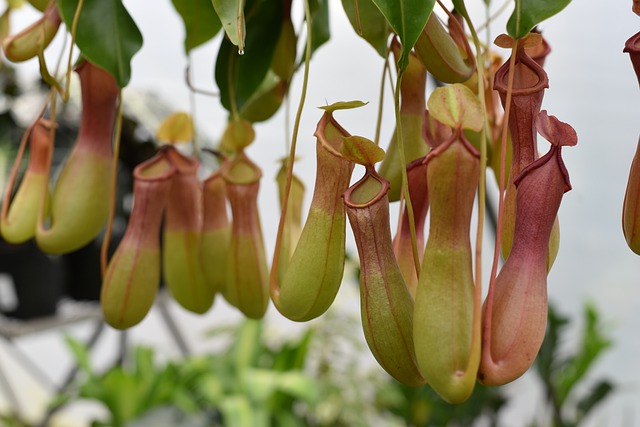
Also known as the tropical pitcher plant, it looks beautiful in hanging baskets thanks to its cup-shaped dangling pockets that hang from its tendrils. These dangling pockets are what traps and dissolves the insects for the plant to feed.
Growing Tips:
- This plant loves morning sunlight, so place it in bright indirect sunlight where it can receive plenty of morning light.
- Make a potting mix from 3 parts of sphagnum moss, 1 part of pumice, perlite, or lava rock.
Get a Monkey Cup plant for your hanging baskets.
7. Australian Pitcher Plant (Cephalotus follicularis)
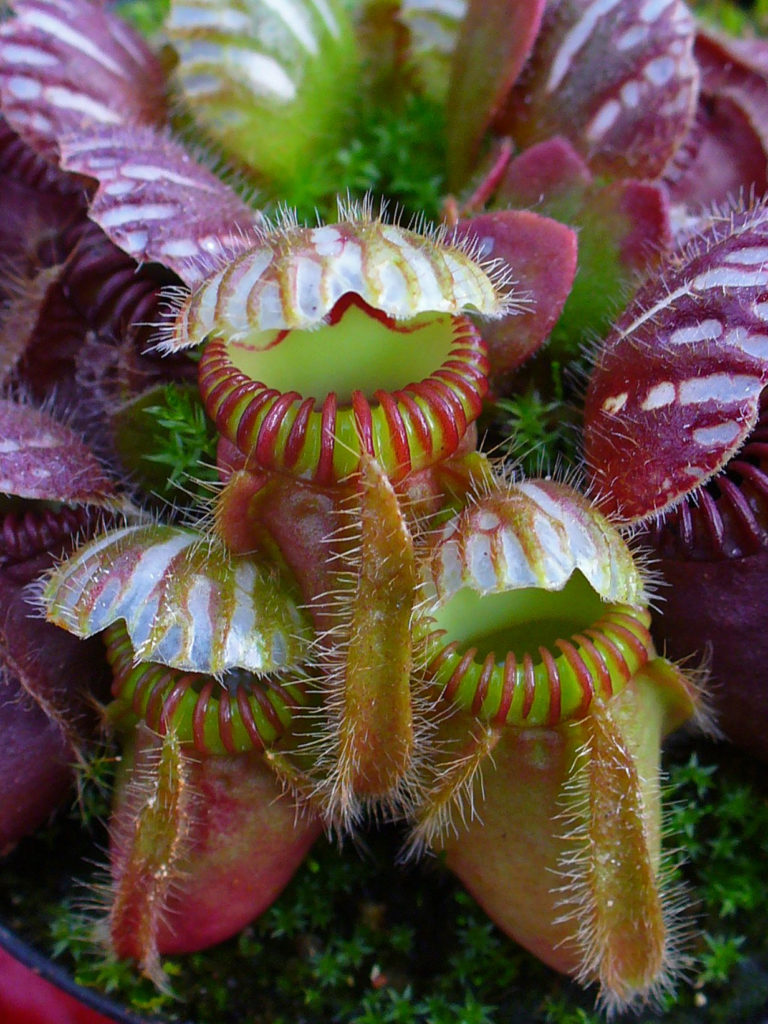
Also known as the fly-catcher, the carnivorous leaves of the pitcher plant have small green pitchers, protected by a red-white hairy lid. The opening door of the pitcher holds red rings that produce nectar, and attract preys. Inside are two glands that form a digestive enzyme fluid that breaks down and digests the flesh of insects.
Growing Tips:
- Prefers warm temperatures, moist soil and partial sun.
- You can place this carnivorous plant in an aquarium together with other ones to provide warmth and moisture.
Here’s a guide on how to grow carnivorous plants in pots here.

